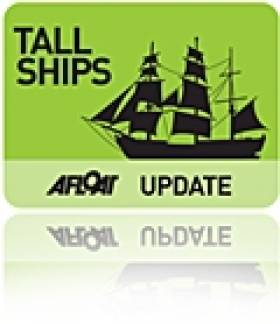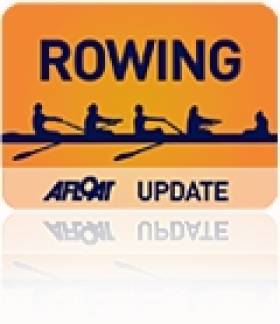Displaying items by tag: College
National Maritime College Open its Doors
Situated on the shores of Cork Harbour this magnificent facility has both a National and International reputation with students from as far away as the United Arab Emirates. For the Open Day, representatives from International Shipping Companies and Maritime Organisations will be available on site to provide information about careers in the industry.
There will be tours of the College, including the multi-million euro shipping simulators, sea survival centre and engineering workshops.
Details on course opportunities at the NMCI will be available at the Open Day – Tuesday, October 25th. For further information please contact phone 021 4970607
'Class Afloat' Tall Ship to Visit Belfast Next Week
West Island College International - Class Afloat is one of the world's most unique and interesting educational experiences. It offers high school and university students the opportunity to take fully accredited courses while sailing aboard a traditional fully-rigged class 'A' tall ship built in 1924.
Some facts about Class Afloat:
Created in 1984 as a Canadian International Youth Year programme.
Has visited ports of call on every continent of the world.
Students and staff participate in two service projects in the Dominican Republic and in our West Africa Initiative in Dakar, Senegal
Students tend to come from the top 25th percentile in their home schools and 98% of our students attend the university of their choice after graduating with us
Students spend four hours a day outside of the classroom learning how to run and maintain the ship
Students leave the program having developed strong leadership skills, an ease at working in groups, a sense of responsibility and accountability, ready to participate as an active and conscious citizen.
More on the website here
Conwell and Heffernan Receive Maritime College Award
CIT's Dr Barry O'Connor, Registrar and Vice President for Academic Affairs, congratulated the students on their outstanding academic achievements across undergraduate and postgraduate level programmes which are nationally, internationally, and professionally accredited.
Cork Crews Rise to the Top at Cork Head
Cork crews saw off rivals from far and near at the Cork rowing Head of the River at the Marina on Saturday. UCC’s men’s senior eight were the fastest men’s crew – by 1.3 seconds from De Maas of Rotterdam, a masters eight. The fastest women’s crew was Cork Boat Club’s junior 18 eight, adjudged just .8 of a second quicker than UCD’s women’s senior eight. The fastest men’s single sculler was John Keohane of Lee Valley and Karen Corcoran-O’Hare of Shandon was the fastest women’s single sculler.
Cork Head of the River, The Marina, Cork, Saturday
Overall: 1 UCC men’s senior eight 12 minutes 6.7 seconds, 2 De Maas, Rotterdam men’s masters eight 12:08.0, 3 UCC men’s novice eight 12:25.9, 4 UCD men’s novice eight 12:42.4, 5 Presentation College men’s junior eight 12:44.3, 6 Muckross intermediate eight 12:49.9.
Men, Eight – Senior: UCC 12:06.7. Intermediate: Muckross 12:49.9. Novice: UCC 12:25.9. Junior: Presentation 12:44.3. Junior 16: Cork 13:21.2. Masters: De Maas 12:08.0.
Fours – Senior: Cork/Garda 12:53.6. Intermediate: UCC 13:40.6. Novice: Cappoquin 13:43.9. Junior 18, coxed: Presentation 13:04.0
Pair – Junior 18: Presentation 14:58.7. Masters: De Maas 13:09.9. Coastal – Novice: Ahakista 17:28.7.
Sculling, Quadruple – Senior: Shannon 13:50.8. Novice: Shannon 15:07.4. Junior 18: Cork 13:05.3. Junior 16: Cork 13:15.2.
Double – Intermediate: Cork IT 13:41.6. Junior 18: Clonmel 13:53.9. Junior 16: St Michael’s 15:04.4. Coastal – Novice: Kilmacsimon 16:17.2.
Single – Senior: Lee Valley (J Keohane) 14:16.4. Intermediate: Lee (O’Connell) 14:53.4. Novice: Lee (O’Connell) 14:37.9. Junior 18: Workmen’s (Burns) 14:33.0. Junior 16: Shandon (Casey) 15:08.9. Masters: Skibbereen (Barry) 15:40.07. Coastal – Novice: Kilmacsimon 17:33.6
Women – Overall: 1 Cork junior eight 13:40.0, 2 UCD senior eight 13:40.8, 3 St Michael’s junior eight 13:54.1.
Eight – Senior: UCD 13:40.8. Novice: UCC 14:25.4. Junior 18: 1 Cork 13:40.0. Junior 16: Clonmel 16:21.0.
Four – Senior: Muckross 14:15.9. Intermediate: UCC 17:00.9. Novice: UCC 16:29.8. Masters: Skibbereen 22:34.9.
Pair – Junior 18: St Michael’s 15:00.2.
Sculling, Quadruple - Novice: Shannon 15:51.4. Junior 16: St Michael’s 15:16.5.
Double – Intermediate: UCC 16:15.1. Junior 18: Cork 14:43.9. Junior 16: Lee 15:42.3. Masters: Cork 15:38.3.
Single – Senior: Intermediate: Shandon (K Corcoran-O’Hare) 15:39.7. Junior 18: Lee (Kearney) 16:52.1. Junior 16: Lee (Hamel) 16:13.6. Masters: Cork (Crowley) 17:49.2.
Coastal: 1 Kilmacsimon men’s novice double scull 16:17.2, 2 Ahakista men’s novice quadruple coxed scull 17:28.7.
Click this link for Irish Rowing detailsClick this link for the Latest Rowing News



























































